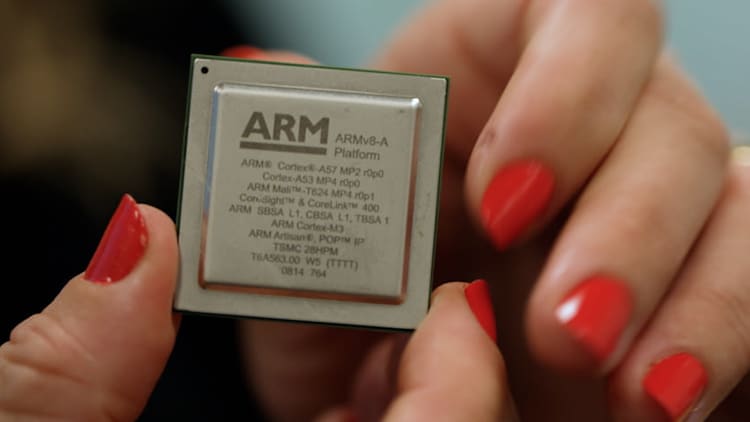
The logo of Nvidia Corporation is seen during the annual Computex computer exhibition in Taipei, Taiwan, May 30, 2017.
Tyrone Siu | Reuters
BEIJING — U.S. chipmaking giant Nvidia has reportedly found a way to sell high-end chips to Chinese companies — while remaining compliant with U.S. rules aimed at curbing China’s access to the tech.
China accounts for 20% to 25% of Nvidia’s revenue in its data center business, its biggest unit.
Nvidia is set to deliver three new chips to domestic manufacturers in the coming days, Chinese financial media Cailian Press said Thursday, citing sources.
The chips — called HGX H20, L20 PCle and L2 PCle — are based on Nvidia’s H100 chip, the report said.
The H100 and A100 artificial intelligence chips were the first to be hit by new U.S. restrictions last year that aimed to curb sales to China. Nvidia said in a September 2022 filing the U.S. government would still allow it to develop the H100 in China.
In the near term, Chinese manufacturers have no better option and they will continue to buy Nvidia’s chips, while searching for replacements.
Bo Du
managing director, WestSummit Capital Management
Companies in China had then switched to Nvidia’s H800 and A800 chips, but the U.S. subsequently clamped down on those sales last month with new restrictions.
The H20’s computing power is only about 50% of that of the A100, said Bo Du, managing director at WestSummit Capital Management and a former engineer in the chip industry.
That’s “basically saying goodbye to physical simulation,” he said in Mandarin, translated by CNBC. While it’s possible to use clusters of lower-power chips to support large model calculations, he said there’s no ideal solution given the costs.

“In the near term, Chinese manufacturers have no better option and they will continue to buy Nvidia’s chips, while searching for replacements,” Du said, noting that some large internet companies have started to buy domestically-made AI chips at scale.
Demand for artificial intelligence computing power has only gone up as companies in China rush to develop local versions of OpenAI’s ChatGPT.
Navigating a fine line
The Financial Times also reported the news of Nvidia’s new chips for the China market, citing a document the chipmaker distributed to potential customers.
Nvidia declined to comment. The U.S. Department of Commerce and the Bureau of Industry and Security did not immediately respond to a CNBC request for comment.
All three of Nvidia’s new chips have operating metrics outside the threshold of the U.S. restrictions, research firm SemiAnalysis said in an online post Thursday. The company operates a Substack tech newsletter that claims to have more than 64,000 subscribers.
“Nvidia is perfectly straddling the line on peak performance and performance density with these new chips to get them through the new US regulations,” SemiAnalysis said.
Nomura analysts previously found Nvidia’s Drive AGX Orin chip also did not meet all the criteria warranting a U.S. restriction on sales to China, allowing electric car companies in the country to still use the chip.
The U.S. has said its focus is on limiting China’s development of advanced tech for military use. President Joe Biden’s administration has also emphasized the country is in competition with China.
Domestic players are trying to develop workarounds to the U.S. restrictions.
In late August, Huawei released a smartphone that reviews indicated offers download speeds associated with 5G, thanks to an advanced semiconductor chip.
It’s not clear whether older equipment or alternative procurement processes were involved with the latest chip production.
— CNBC’s Arjun Kharpal contributed to this report.